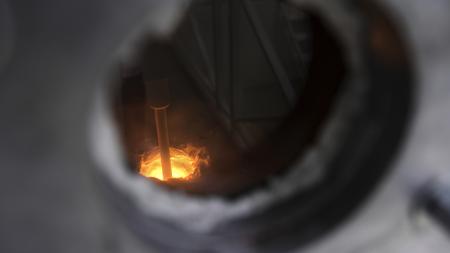Mitigation: Industry & Manufacturing
Climate Goals - Mitigation: Industry & Manufacturing
Industry and manufacturing is one of the top five sources of Colorado’s Greenhouse Gas (GHG) emissions. Colorado’s industrial and manufacturing sector includes a variety of facilities and activities in the oil and gas industry as well as plants that create cement, glass, hydrogen, iron and steel, and lime and soda ash. Electronics and semiconductor manufacturing and electrical transmission and distribution also fall into this category.
State of Colorado Industry & Manufacturing – Goals & Actions
In July, 2021, the state passed a law that requires Colorado’s industrial and manufacturing sector to reduce its GHG emissions 20% by 2030, compared to 2015 totals. This goal is driven by multiple rules and regulations that have been adopted by the state’s Air Quality Control Commission, or are in development and planned for the future.
Key Priorities
Goals:
- Reduce sector-wide emissions from industrial and manufacturing facilities.
- End the use of industrial chemicals known as hydrofluorocarbons (HFCs) with very high global warming potential, which harm the climate, to use chemicals that are safer for the climate.
Actions:
- Adopt rules on manufacturing emissions: The Colorado Air Quality Control Commission adopted a regulation for a Greenhouse Gas Emissions and Energy Management for Manufacturers In Colorado (GEMM) in 2021. The GEMM rule requires facilities to show they use the most efficient technologies and practices to minimize GHG emissions. They are also required to reduce GHG emissions by an additional 5%.
- Regulate emissions in the transportation, storage, and trade of oil and gas: the engines, heaters, and boilers used in the movement and storage of oil and gas produce a lot of GHG emissions. The Air Pollution Control Division plans to propose a rule to the Air Quality Control Commission in 2024 to address these emissions.
- Phase out HFCs: In 2020, the commission adopted the Hydrofluorocarbons (HFC) Phase-out Rule. This rule requires companies to stop production and use of HFCs, which are found in aerosol propellants, chillers, foam, and stationary refrigeration in Colorado.
- In October 2023, the commission passed a follow-up rule called Greenhouse Gas Emissions and Energy Management for Manufacturing Phase 2 (“GEMM 2”). This rule requires certain large industrial and manufacturing facilities not regulated by the GEMM 1 rule to reduce emissions by 20% as a whole. A credit, tracking, and trading system will be developed for GEMM sources.
Overall Climate Goals:
Lead the nation in new ways to reduce GHG emissions by encouraging the use of carbon dioxide removal (CDR) technologies. The State aims to create legal and regulatory pathways to develop carbon capture and storage (CCS) and direct air capture (DAC). CCS refers to a group of technologies that cut carbon dioxide (CO2) emissions from large sources such as power plants, refineries and other industrial facilities. Direct Air Capture uses mechanical systems to capture CO2 directly from the atmosphere and compress it so it can be injected underground or used to make long-lasting products, such as cement.
Overall Climate Actions:
- Provide expert recommendations: In 2021, the Colorado Energy Office established a task force for CCS to further investigate how CCS could be appropriately enabled, deployed, and regulated.
- Define a legal pathway: In February 2023, the Governor’s office directed the Colorado Oil and Gas Conservation Commission (COGCC) – now known as the Energy and Carbon Management Commission – to outline the statutory changes necessary to clear a legal path for CCS projects in Colorado.
- Increase support for carbon management programs: Except for agricultural, forestry, and enhanced oil recovery projects, efforts to improve industrial and manufacturing operations through funding are available through the clean air grant program. Through lawmaking, state agencies are also required to develop a state carbon management roadmap.
- Act on the need for direct air capture: In June 2023, Colorado and Wyoming announced a Memorandum of Understanding regarding direct air capture activity and development.
- Give technical support: The state provides a Clean Air Program technical assistance program that helps facilities improve efficiency.
- Provide funding: The state also offers Clean Air Program grants, which help fund projects for industrial facility energy and emissions reduction and industrial decarbonization tax credits.

